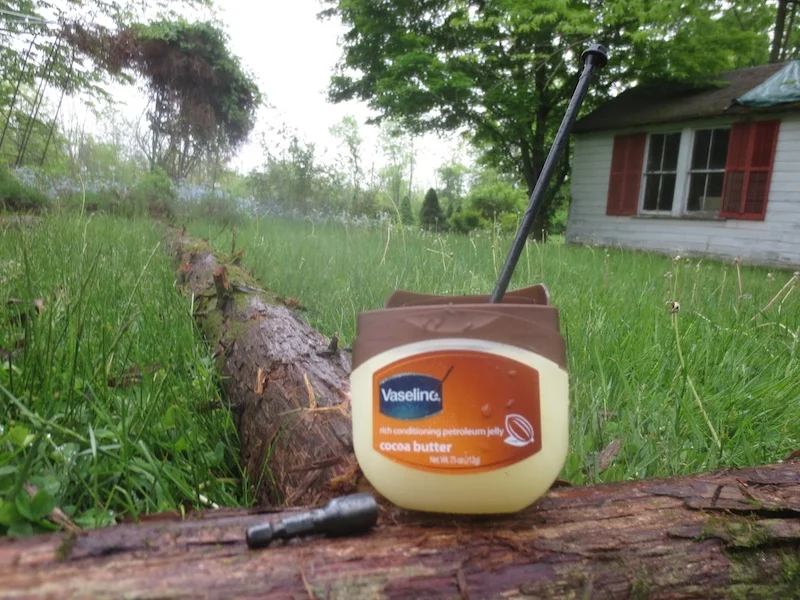Raising an Arbor

When life gives you lemons, you make lemonade. When life gives you poles, you have two options. The first is to try mastering Nomi Malone’s Cheetah’s Topless Club dance routine at from the movie Showgirls. Alternately, if they are made from cedar trees with the bark still intact, you might build a rustic arbor. When a load of cedar poles unexpectedly landed on my lawn earlier this year, this choice was thrust upon me. Not wanting to risk splinters in my tongue and lacking the inherent flexibility of Elizabeth Berkeley, I opted for the latter.

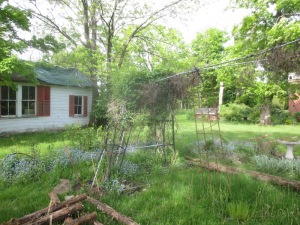
Although it was not necessarily the project I had in mind to tackle this season, my four fall-blooming clematis also helped steer the decision. The metal tuteurs they had been growing on, or more aptly been growing over for close to a decade were quite literally on their last legs, several having been twisted and broken off by the elements over time. Propped up with stakes braced with metal rods between them, I had created a metal quasi-arbor. It was a shaky structure at best, even before Sandy delivered the coup de grace to it last fall. They were in sore need of something new to prop them up.
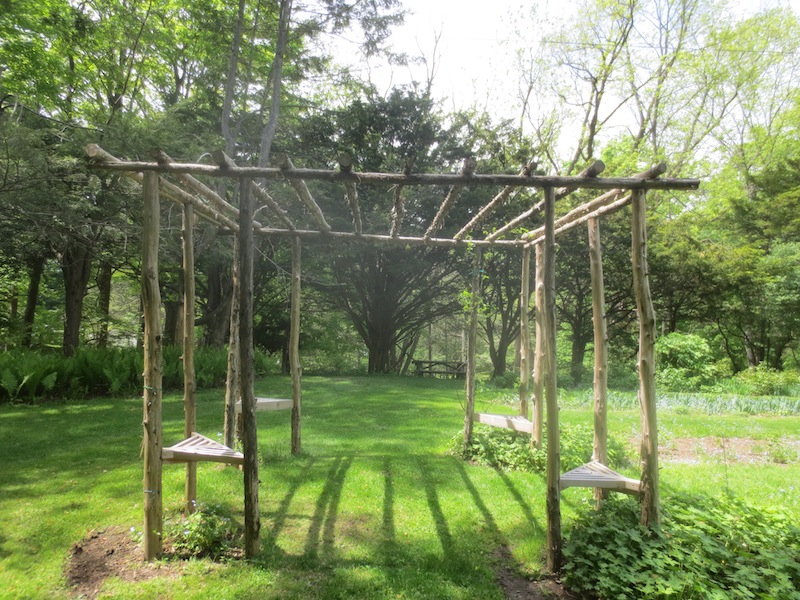
From out of my rough-barked pile a new arbor would soon arise, a clematis-draped corner of rusticity for my garden. I had a model to follow as well, a simple structure found in the cutting garden at Clermont. I asked the crew who work at the park if it had been easy to build.
“Really easy”, they assured me “Just make sure to alternate the skinny and fat ends of the posts when putting it together. Skinny, then fat, skinny, then fat.”
“Got it!” I replied. It seemed easy enough. I just needed to remember Oprah, Oprah, Oprah when laying out the poles.
“Oh, and use 8 inch timberlocks - But be very careful when using the drill” they cautioned, “the torque can snap your wrist, just like that”. Seeds of doubt crept in. I wasn’t exactly sure what a timberlock was, and though I had never tested my wrists’ torque resistance, I would assume they are naturally more snap-able than average.
“One other thing.” Joe added, “If you put some Vaseline on the tip, it will help them go in easier”. I nodded in agreement, happy to be back in somewhat familiar territory.
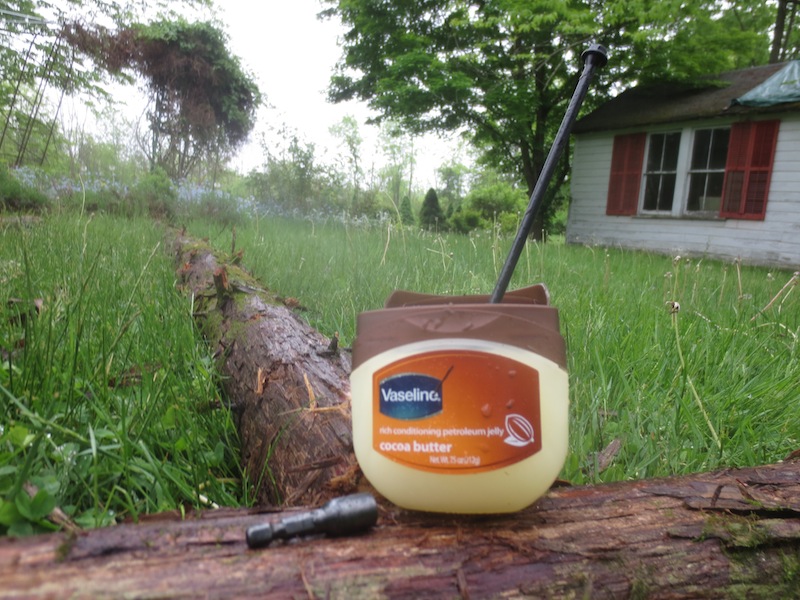

After acquiring the necessary tools to complete the task, I was ready to dive in certain I could knock this arbor out in a week’s time all by myself. Ever the optimist, I had conveniently forgot that with most of my “DIY” projects, frustration, injury or incompetence would most likely cause me to bring in assistance at some point. The first part was by far the easiest, and most fun, coming up with the design. The arbor would consist of four vertical posts on each side, forming a rectangle roughly 8 feet by twelve feet, constructed along the lines of Clermont’s. Going from a square to a rectangular shape, I was afraid the rough timbers might lend the structure a bit of long-housey feel which was definitely not the look I was after (potlatch aside). Playing with the proportions a bit, I added a little more verticality, which I felt better blended with the semi, not quite formal hodgepodge look of my garden.

Knowing the dimensions and basic construction, I then used my chainsaw to cut the cedar trunks to their appropriate lengths. Once all of the various pieces were ready I mulled over the order of assembling it. The most logical way seemed to be assembling each side first stand them into the post holes, then connecting them to one another. The problem was while each individual cedar post was relatively light and easy to maneuver. A fully constructed side would be way too large, cumbersome and heavy for me to maneuver on my own. I was at the pivotal moment in my project when I needed help.
I was thinking of the most logical person who might be able to get to assist me, when suddenly a vision of the barn raising scene in Witness starring Harrison Ford and some little kid whose name I forget flashed through my mind.
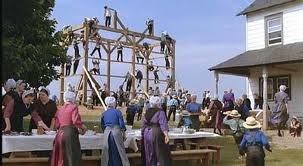
That was it! I would get some Amish people. They always seemed ready to aid a neighbor, and (at least I think) they do it for free. And it would be fun to boot! Happy ladies in plain dress, jolly men with funny beards, all pitching in to raise a barn, or in my case an arbor, in no time flat – with plenty of scrapple, apple butter and shoofly pie to go around! The only catch was, I hadn’t seen any Amish neighbors lately (or ever, for that matter). The only jolly neighbor with a funny beard I knew was a woman. Still, I heard they were settling in Upstate New York, so maybe they were just flying under the radar and I just hadn’t seen any yet. I just needed something to attract them to my house. Maybe the scent of a freshly baked shoofly pie sitting on a windowsill would lure a passing buggy. Not quite certain what was in a shoofly pie, or wanting to bake, I opted instead to burn, apple, vanilla and any other scented candles found in baked goods on a windowsill. To ensure proper wafting I set a fan behind them pointed towards the road

While waiting for the Amish Aid to arrive, I began attaching the pieces of each side of the arbor together – praying to the gods of Vaseline (with coca butter) that my wrist wouldn’t snap in the process. The wood, freshly cut and still full of sap, was very difficult to drill through, even with the timberlocks’ tips liberally lubricated. I pushed the drill as far as it would go – it started smoking at times, but I still I couldn’t get some all the way in. In the end, I managed to get everything attached, albeit in a slightly wobbly fashion. I then turned my attention to digging the postholes. I borrowed a posthole digger from a neighbor, which I thought would make the process easier. It still took a great deal of effort and much longer than I had anticipated. What should have taken two evenings after work to complete was now taking more than a week, with heavy rains adding to the delays.
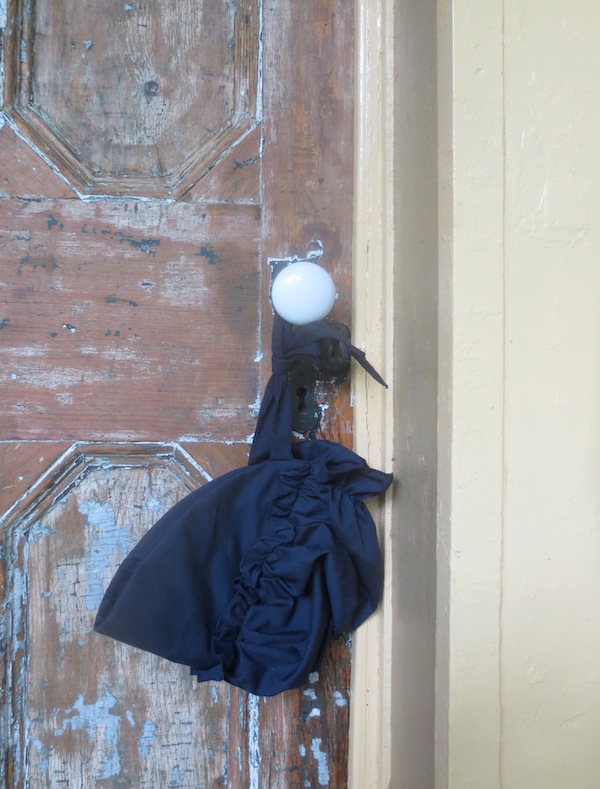
In the meantime, no Amish had turned up. Maybe my lure wasn’t strong enough, especially since the fan kept blowing the candles out instead of wafting their mock shoofly scent towards the road. I tied a bonnet to the front doorknob, hoping it might be some sort of international Amish signal of distress. A couple more days came and went, with no results. Not even a Mennonite or errant Quaker appeared with their tools, let alone scrapple. Faced with 4 sides of an arbor lying on the wet ground, 12 holes and just me, I untied the bonnet from the doorknob and did what I probably should have done in the first place - I called my neighbor Mark Brown who came over to help.
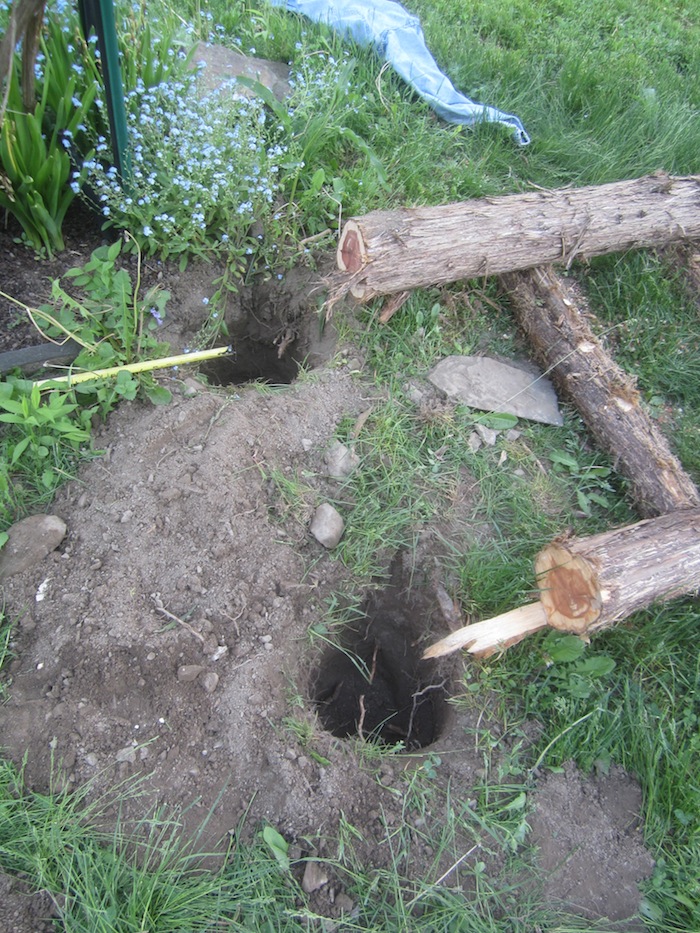
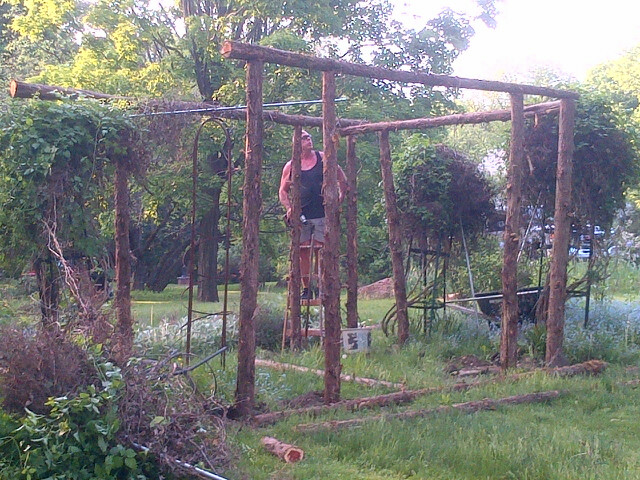
Over the course of the next two evenings, he guided me through (and did most of the heavy work needed to finish) the project. He brought along a strong drill, which firmly sunk the timberlocks into the previously impenetrable wood. When we were ready to raise each side, he looked into the holes I had dug and explained patiently that what I had perceived as depths of 2-3 feet were actually closer to 11 or twelve inches, far too shallow to support the structure. Together we dug through the rocks and clay so each was almost two feet deep. The rest was a breeze. We were able to raise the sides and set them into the holes fairly easily.Mark attached each side one to the other, then we laid the remaining posts across the top as cross pieces, skinny end next to fat end, Oprah style. And so it was done.

I untangled two of the clematis plants from their tuteurs and retrained them on the new structure. Though the greenery almost immediately died off from shock, they are making a comeback. The other two vines shall remain on their existing tuteurs until early next spring, when I shall retrain them before the new growth starts. I still have to add some decorative elements, to the arbor, and even out the ground underneath, but I am happy with how it turned out, as well as the lessons learned.
1. There has yet to be an Amish invasion of Columbia County
2. The project might have gone faster and easier had I asked for assistance immediately
3. Wait until the offseason to untangle clematis from a tuteur
4. Vaseline is not just for breakfast anymore

I am saving the best lesson for last, however. There was one pole left over from the project. I know exactly what to do with it.

